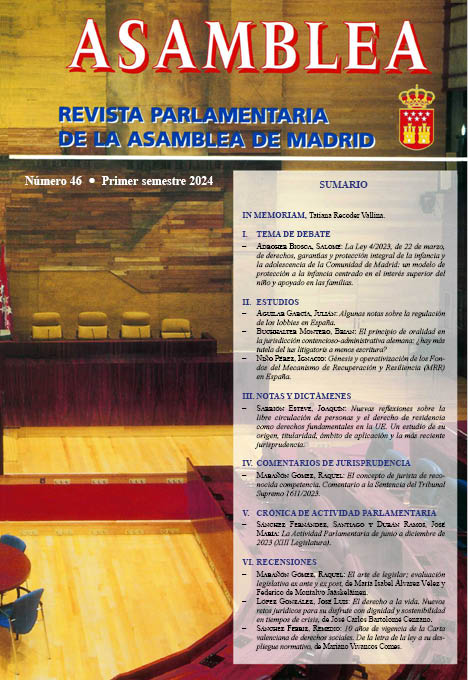Genesis and operationalization of the Recovery and Resilience Facility (RRM) in Spain
Main Article Content
Abstract
The approval, by the European institutions, of «Next Generation EU», as a response to the crisis derived from the COVID 19 pandemic, can be considered a milestone in the European construction process. Not only that decision allowed to rectify previous mistakes (such as those derived of the uneducated response to the financial crisis starting in 2008), but also, it constituted a solidarity and common reaction of the entire Union.
From this financial package named Next Generation EU, emerged the «Recovery and Resilience Mechanism» (MRR), which in Spain took shape as the «Recovery, Transformation and Resilience Plan» (PRTR). This Plan, which was definitively approved on July 13, 2021, will be implemented until 2026 and represents the largest financial aid instrument ever received by our country. In this sense, it is, as well, a historic opportunity to recover the path of growth and lay the foundations for a sustainable and resilient economy.
This article aims to provide a complete overview of each and every step taken throughout this process of launching the MRR and approving and executing the PRTR, up to the current moment. The lessons and good practices learnt from this journey will be enormously useful for the adaptation or creation of new aid instruments that, without any doubt, the European Union will have to implement beyond the year 2026, moment when even if Next Generation EU expires, for Europe, the challenge of adapting to a challenging economy and environment will continue to be a pressing priority.
Downloads
Article Details
How to Cite
Issue
Section

This work is licensed under a Creative Commons Attribution-NonCommercial-NoDerivatives 4.0 International License.
© Asamblea de Madrid. Los originales publicados son propiedad de la Asamblea de Madrid, siendo necesario citar la procedencia en cualquier reproducción parcial o total.

